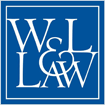Document Type
Article
Publication Title
Michigan Journal of Race & Law
Publication Date
2023
Abstract
Public status shapes private ordering. Personhood status, conferred or acknowledged by the state, determines whether one is a party to or the object of a contract. For much of our nation’s history, the law deemed all persons of African descent to have a limited status, if given personhood at all. The property and partial personhood status of African-Americans, combined with standards developed to facilitate the growth of the international commodities market for products including cotton, contributed to the current beliefs of business investors and even how communities of color are still governed and supported. The impact of that shift in status persists today. The commodities markets and the nations that rose and prospered would not be possible without the slave trade, and that trade would not be possible without the legal, business, and social norms in place to facilitate private ordering and growth while reinforcing the subjugation of African-Americans. Yet, many business and commercial law professors devote class time to teaching foundational and historical material, without any consideration of the impact of slavery. To avoid slavery in business and commercial law courses is to ignore an institution that plays a pivotal role in much of what we do today. Slavery is not a frolic, it is foundational.
Many American universities played a role in the slave trade—either by receiving funds from the enterprise or receiving the enslaved as donations and using their labor or disposing of them for the financial advancement of the institution. In my Core Commercial Concepts course, a Uniform Commercial Code (UCC) survey class covering Articles 2, 3, 4, and 9, I devote time and space to discussions of race and the law by making the connection between the history of commercial concepts, slavery, and the role of the cotton industry in the shaping of international commercial law norms. In my simulation, described in this Essay, I teach the story of Washington and Lee University’s sale of individuals for the purpose of ensuring the institution’s financial survival, then extrapolate from the facts to review the high points of commercial law. I incorporate materials on the legacy of slavery at my own institution to provide students with a scenario based on the acquisition of real property and construction of buildings they engage with on campus. In this Essay I explain the methods I use to explore these concepts. Working in a framework that focuses on classification and status, my students consider issues of federalism and the impact of statutory definitions on private ordering, while discussing how these definitions shape the relationship of African-Americans to commerce.
Recommended Citation
Carliss N. Chatman, Teaching Slavery in Commercial Law, 28 Mich. J. Race & L. 1 (2023).
Included in
Commercial Law Commons, Contracts Commons, Law and Race Commons, Legal Education Commons

